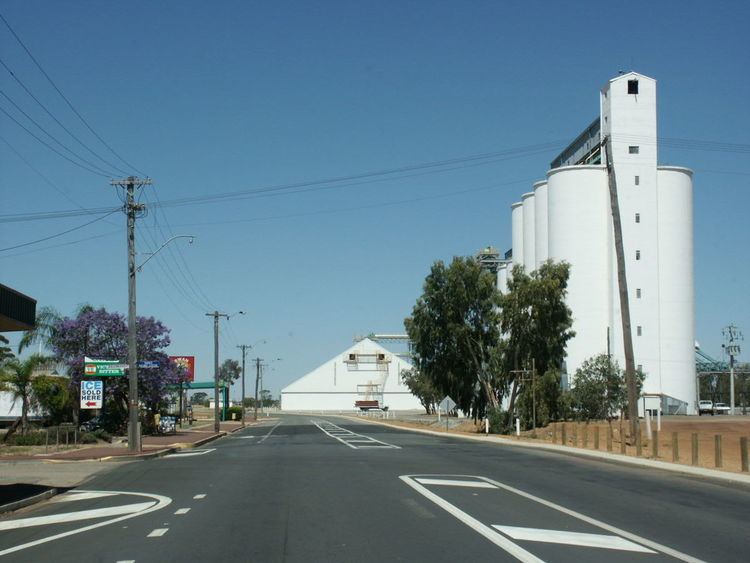 | ||
CBH grain receival points (also known as the bins or wheat bins in local popular usage) are grain silos spread around Western Australia, primarily in the wheatbelt region. Historically they have been linked with the wheatbelt railway lines, and the transport of grain to ports for export.
Contents
Beginnings
The earlier bins were made at the time of the change from wheat transport in bags, to bulk operations - and at the time of the creation of the CBH Group in 1933.
The first five bins or grain receival points were located at Western Australian Government Railways sidings at:
Due to their size, many of the storage bins were significant landmarks on the landscape in the agricultural communities of Western Australia.
Deregulation and competition
In 2012, the Australian federal government deregulated the grain market in Australia.
In 2013, after 80 years of operation without competition, grain storage and transport in the Great Southern region has another operator due to a separate grain operation at Albany.
Hierarchy
In the 1970s the 10 districts in the CBH system were known as "Directors" Districts.
By 2011, the Western Australian wheatbelt operations of CBH was split up into 12 management zone areas, with a set of locations in each zone with management offices, port terminals, and transfer depots identified.
Geraldton Port zone
The Geraldton Port zone is served by two areas - one based on Geraldton, and the second based in Morawa.
Area 1
The primary receival sites for this zone are:
The secondary receival sites for this zone are:
The closed receival sites for this zone are:-
Historically, in this area there were also 1933 installation receival points at:
Area 2
Kwinana Port zone
Area 3
Area 4
Area 5
Area 6
Area 7
Albany Port zone
Area 8
Area 9
Area 10
Esperance Port zone
Area 11
Area 12
Grain storage types
Most grain receival points in the wheatbelt have combinations of historic structures that are still utilised, and new structures. Where the older structures tend to be next to, or aligned with the railway lines where they were built, many sites have extended grounds. As a consequence, identifying the types of silo/containers at some sites may uncover up to three or four different structures at the one location. Brookton for example has at least three different types present on the CBH property.
Grain receival points
Total numbers of receival points in the system from the founding in 1932 to 1999 - the peak number occurring in 1965-1967:
